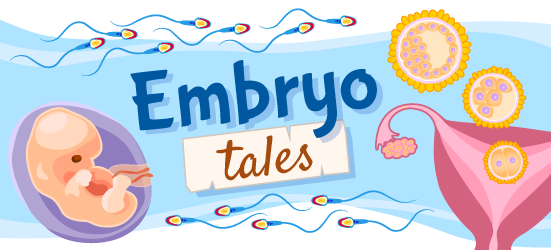Embryo Tales

In 2020, the Embryo Project Encyclopedia (EPE) partnered with Ask A Biologist (AAB) to create a new content type connecting the two publications – Embryo Tales. EPE is a peer-reviewed encyclopedia on reproductive health and developmental biology, while AAB is an online biology education resource with stories, audio and video interviews, coloring pages, and activities, which more than 7,000 classrooms use. Both projects are based at ASU and use the ASU domain for their websites.
Embryo Tales are a joint effort to create informative stories about embryology—including reproductive health and developmental biology—for young readers. Now, children, teachers, and parents can find content on all things embryology in easy and engaging short stories on the AAB website. Students in the Embryo Project Writing Seminar and its instructors, Dina Ziganshina, Risa Schnebly, and Jane Maienschein have been working on Embryo Tales for 4 semesters and are very happy to see this project come to life! Dina and I were excited to have the opportunity to help get the project started, working with Karla Moeller from AAB.
Students in the Embryo Project Writing Seminar take articles that the EPE has previously published and effectively communicate the information in a way that is easy to understand for young readers. Employing the help of expressive imagery and descriptive language, Embryo Tales also keep young readers engaged while describing topics that include germ layers, sex determination, and the menstrual cycle.
In my experience, transforming my Embryo Project articles into lighthearted short stories for younger audiences felt rewarding. I loved having the opportunity to bring attention to topics about reproductive health—including my own research on the menstrual cycle and fertility. I believe that the clever use of storytelling to explain those topics will encourage children to be interested in and develop an enthusiasm for embryology. Embryo Tales also provides a practical challenge for student writers to push the boundaries on how we think about and explain our research to others. We strive to make our stories relatable to a broad audience.
Altogether, Embryo Tales are a way to communicate science to children, teachers, and parents while keeping younger audiences enthusiastic about it and inspired to learn more. Through imaginative metaphors—including a cookie recipe to describe sex determination or a blooming flower to explain fertility—Embryo Tales effectively communicate complex scientific jargon. Writers often punctuate those stories with a note that asks questions and looks forward, hopefully inspiring a new generation of scientists and problem solvers.
Written by Emily Santora